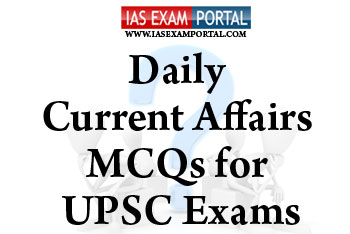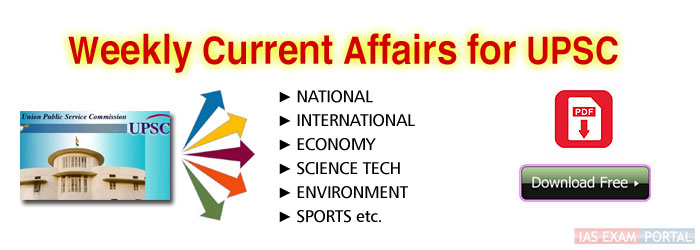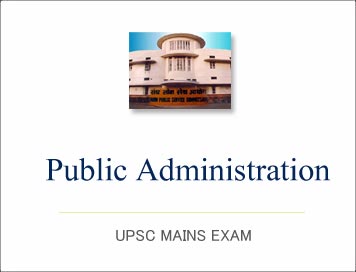
(GIST OF YOJANA) Transformative Impact
Of Digital India
[DECEMBER-2018]
Transformative Impact Of Digital India
The story of India’s Digital journey has been one of transformation and
inclusion. The Digital India Programme was launched by the Government in 2015
with the aim to develop India into a knowledge economy and a digitally empowered
society. Technology has been intrinsic in this transformative evolution by
enhancing transparency, inclusion, productivity and efficiency.
The initiatives under Digital India, coupled with evolving technology, have led
India to become a land of vast possibilities, where hope and talent meet
opportunities digitally. India is among the top countries of the world that have
effectively utilized technology and innovation utilized technology and
innovation to transform the governance outlook from government centric to
citizen centric, where e-services are targeted towards creation of an
environment of empowering citizens through participative governance, and
engaging them in decision-making and formulation of government policies,
programmes, regulations, etc. The remarkable increase in digital adoption is
evident in the improvement in India’s position in United Nations E-Government
Index 2018 that highlights that India’s relative capabilities of utilizing ICT
for governance have improved relatively faster than the entire Asia region.
There have been significant improvements in UN-Online Service Index, where India
has scored 0.95 in 2018. There has been a consistent growth in e-participation
index too, that has grown to 0.96 in 2018. The robust citizen engagement
platform, “MyGov”, in true spirit of participative democracy, has been developed
and implemented.
India is in a sharply accelerating “lift-off” phase of its digital journey.
Having built a strong foundation of digital infrastructure and expanded digital
access, India is now poised for the next phase of growth- the creation of
tremendous economic value and the empowerment of millions of Indians as new
digital applications permeate sector after sector.
India has moved up the ladder of digital adoption with the multifold growth in
digital payment transaction. It has risen from 335 crore transactions in 2014-15
to 2070.98 crore transactions in 2017-18 and is growing day by day. The
advantage of Digital Payments is being well exploited through Direct Benefit
Transfer (DBT) which has reassured the commitment of the Government towards the
welfare of the people. Now, DBT is using the digital payment technology to
transfer the benefits/subsides directly to the accounts of people. The transfer
is instantaneous and the correct amount reaches the beneficiaries. So far, Rs.
5.06 lakh crore direct benefit transfer have taken place and this has led to the
savings of around Rs. 90,000 crore. Around 434 schemes are covered under DBT.
Digital Developing Service
Digital India has changed the landscape of delivery of service and governance.
The Common Services Centres are ICT enabled rural enterprise in the country and
provide plethora of service at the doorstep of the citizens. Over 300 services,
ranging from Education, Health, Agriculture, Certificate related are being
provided in around 3.07 lakh CSCs. They have also become a major employer of
rural youth through village level entrepreneurship leading towards an empowered
and a digital inclusive society, thus, bridging the digital divide.
Digital transformation is an ongoing process to engage, enable, empower and
sustain people on their digital journeys. Towards this, Digi Locker has enabled
people to store, share and verify their documents and certificates through
cloud. Since the documents are electronically signed and shared from issuing
authority, no attested or original copies are required to be produced. Now, a
user can share her educational certificate with a potential employer at the
click of the button. With more than 1.59 crore registered users and 2.14 crore
uploaded documents, this has offered an unlimited digital space free of cost to
the citizens.
National Scholarship Portal has become a source of facilitating education. It is
a one-stop solution that ensures students to access various services starting
from student application, application receipt processing, sanction and disbursal
of various scholarships with ease. It has comprehensive coverage of schemes and
departments. Since its launch in 2015, more than Rs 5,257 crore have been
disbursed to 1.8 crore students/beneficiaries.
Jeevan Pramaan, provides the ease to pensioners to generate their Digital Life
Certificate at home, bank, CSC centre, government office etc, using Aadhaar
biometric authentication. Now, the physical presence of the pensioner at the
government office is not needed for generation of her life certificate and
availing the entitled services. So far, around 1.75 crore Digital life
Certificates have been generated.
To sustain the people throughout their digital journey, a Unified Mobile
Application for New Age Governance has been launched. It has brought government
services to the fingertips of the citizens of India. It is a single mobile app
that offers more than 307 government services, with the target being to provide.
It has made lives of sellers to Government extremely simple by eliminating
physical meeting of Government Buyers and brought transparency. There are 1.55
lakh sellers and service providers, 29,729 buyers organizations and 5.97 lakh
products on the platform. The growth of buyers and sellers on GeM is indicative
of its use and ease of selling on the portal.
To keep up the accelerated pace of the digital disruption and the ever changing
digital economy, the skill set of the people also have to be continuously
improved and enhanced for adaptation. Hence the quest to promote digital
literacy and future skilling is of utmost importance. Pradhan Mantri Gramin
Saksharta Abhiyan aims to make 6 crore people digitally literate. Over, 1.23
crore people have been imparted training.
The sustainability of the digital economy rests upon its resilience and
security. The Cyber Swachhta Kendra has been set up to provide alerts to users
for preventing losses of financial and other data. This aims to create an
inclusive, safe and secure cyberspace for people.
Information Technology is not just a vertical anymore and is now part of every
domain. The new and emerging technologies are significantly disrupting and
changing the processes in critically sectors like agriculture, education, health
etc. Deployment of these technologies has a potential to create immense value
and changes the dynamics and delivery models for these sectors. With the
proliferation of emerging technologies in mind, 20 Centres of Excellence are
being planned in the areas of Fintech, LoT in Agriculture, Virtual reality,
Block chain, Medical Technology, Electronics Products, Nano electronics etc.
This will provide an apt platform for research and innovation boosting the
growth of startups.
‘Global IT Challenge for Youth with Disabilities 2018’
A three day event-the “Global IT Challenge for Youth with Disabilities, 2018”
was organized by the Department of Empowerment of Persons with Disabilities,
Ministry of Social Justice and Empowerment in association with Rehabilitation
International Korea and their associated partner LG Electronics from 9th to 11th
November,2018.
This year 96 youth with disabilities from 18 countries namely, India, Indonesia,
China, Vietnam, Malaysia, Thailand, Sri Lanka, Bangladesh, Nepal, Mongolia,
Cambodia, Laos, Philippines, Korea, Kazakhstan, UK and UAE participated in the
Challenge. The event comprised of 55 awards in various categories including
awards for best volunteer and three awards namely, ”Best, Excellent and Good” in
individual and group events in each category i.e. visual, hearing, physical and
development/intellectual disability.
Thailand won maximum i.e. six awards followed by Philippines with five awards.
India bagged three awards including Super Challenger awards. Shri Manjot Singh
from India won two awards in e-tool challenge and e-life map challenge under
visual disability category whereas Shri Saurav Kumar Sinha from India won the
Super Challenger award. Ms. Fayza Putri, Adila from Indonesia won the ‘Global IT
Leader Award’.
The objective of the Global ICT Challenge for Youth with Disabilities is to
leverage IT skills among youth with disabilities and also to spread awareness
about the application of Information and Computer Technology in enhancing the
quality of life of person with disabilities especially in Asia-Pacific region.
India had nominated twelve youth with disabilities to participate in the event.
These youth with disabilities had been selected on the basis of the National IT
Challenge conducted by the Ministry through NIT,
Kurukshetra in June, 2018. India has been participating in the event since 2013
and has been winning awards ever since. Last year the event was held in Vietnam.







